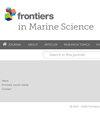Enhancing bathymetric prediction by integrating gravity and gravity gradient data with deep learning
IF 3
2区 生物学
Q1 MARINE & FRESHWATER BIOLOGY
引用次数: 0
Abstract
This study aims to enhance the spatial resolution and accuracy of bathymetric prediction by integrating Gravity Anomaly (GA) and Vertical Gravity Gradient Anomaly (VGG) data with a dual-channel Backpropagation Neural Network (BPNN). The seafloor topography of the Izu-Ogasawara Trench in the Western Pacific will be constructed and evaluated using depth models and single-beam data. The BPNN improved the accuracy of seafloor topography prediction by 0.17% and 0.35% using the 1 arc-minute SIO and GEBCO depth models, respectively, in areas without通过深度学习整合重力和重力梯度数据加强测深预测
本研究旨在通过将重力异常(GA)和垂直重力梯度异常(VGG)数据与双通道反向传播神经网络(BPNN)相结合,提高测深预测的空间分辨率和精度。将利用深度模型和单波束数据构建和评估西太平洋伊豆-小笠原海沟的海底地形。在没有原位数据的地区,使用 1 弧分 SIO 和 GEBCO 深度模型,BPNN 预测海底地形的准确率分别提高了 0.17% 和 0.35%。当使用单波束数据时,与重力地质方法(GGM)、SIO v25.1 和 GEBCO 2023 相比,BPNN 的预测精度分别提高了 64.93%、70.29% 和 68.78%。将单波束、GA 和 VGG 数据全部合并后,均方根误差(RMSE)减小到 19.12 米,与仅使用 GA 或 VGG 数据相比,分别提高了 60.92% 和 61.13%。比较不同深度的测深预测结果,BPNN 的平均相对误差(MRE)低至 0.5%。与 GGM、SIO 和 GEBCO 深度模型相比,BPNN 对不同地形(如海沟区、海山和深海平原)的海底地形预测精度分别提高了 88.36%、87.42% 和 84.39%。这些研究结果表明,BPNN 可以整合 GA 和 VGG 数据,在有原位数据和无原位数据的地区,以及在不同深度和地形的地区,提高海底地形的精度和空间分辨率。这项研究为构建高精度全球海底地形图提供了新的数据和方法支持。
本文章由计算机程序翻译,如有差异,请以英文原文为准。
求助全文
约1分钟内获得全文
求助全文
来源期刊

Frontiers in Marine Science
Agricultural and Biological Sciences-Aquatic Science
CiteScore
5.10
自引率
16.20%
发文量
2443
审稿时长
14 weeks
期刊介绍:
Frontiers in Marine Science publishes rigorously peer-reviewed research that advances our understanding of all aspects of the environment, biology, ecosystem functioning and human interactions with the oceans. Field Chief Editor Carlos M. Duarte at King Abdullah University of Science and Technology Thuwal is supported by an outstanding Editorial Board of international researchers. This multidisciplinary open-access journal is at the forefront of disseminating and communicating scientific knowledge and impactful discoveries to researchers, academics, policy makers and the public worldwide.
With the human population predicted to reach 9 billion people by 2050, it is clear that traditional land resources will not suffice to meet the demand for food or energy, required to support high-quality livelihoods. As a result, the oceans are emerging as a source of untapped assets, with new innovative industries, such as aquaculture, marine biotechnology, marine energy and deep-sea mining growing rapidly under a new era characterized by rapid growth of a blue, ocean-based economy. The sustainability of the blue economy is closely dependent on our knowledge about how to mitigate the impacts of the multiple pressures on the ocean ecosystem associated with the increased scale and diversification of industry operations in the ocean and global human pressures on the environment. Therefore, Frontiers in Marine Science particularly welcomes the communication of research outcomes addressing ocean-based solutions for the emerging challenges, including improved forecasting and observational capacities, understanding biodiversity and ecosystem problems, locally and globally, effective management strategies to maintain ocean health, and an improved capacity to sustainably derive resources from the oceans.
 求助内容:
求助内容: 应助结果提醒方式:
应助结果提醒方式:


